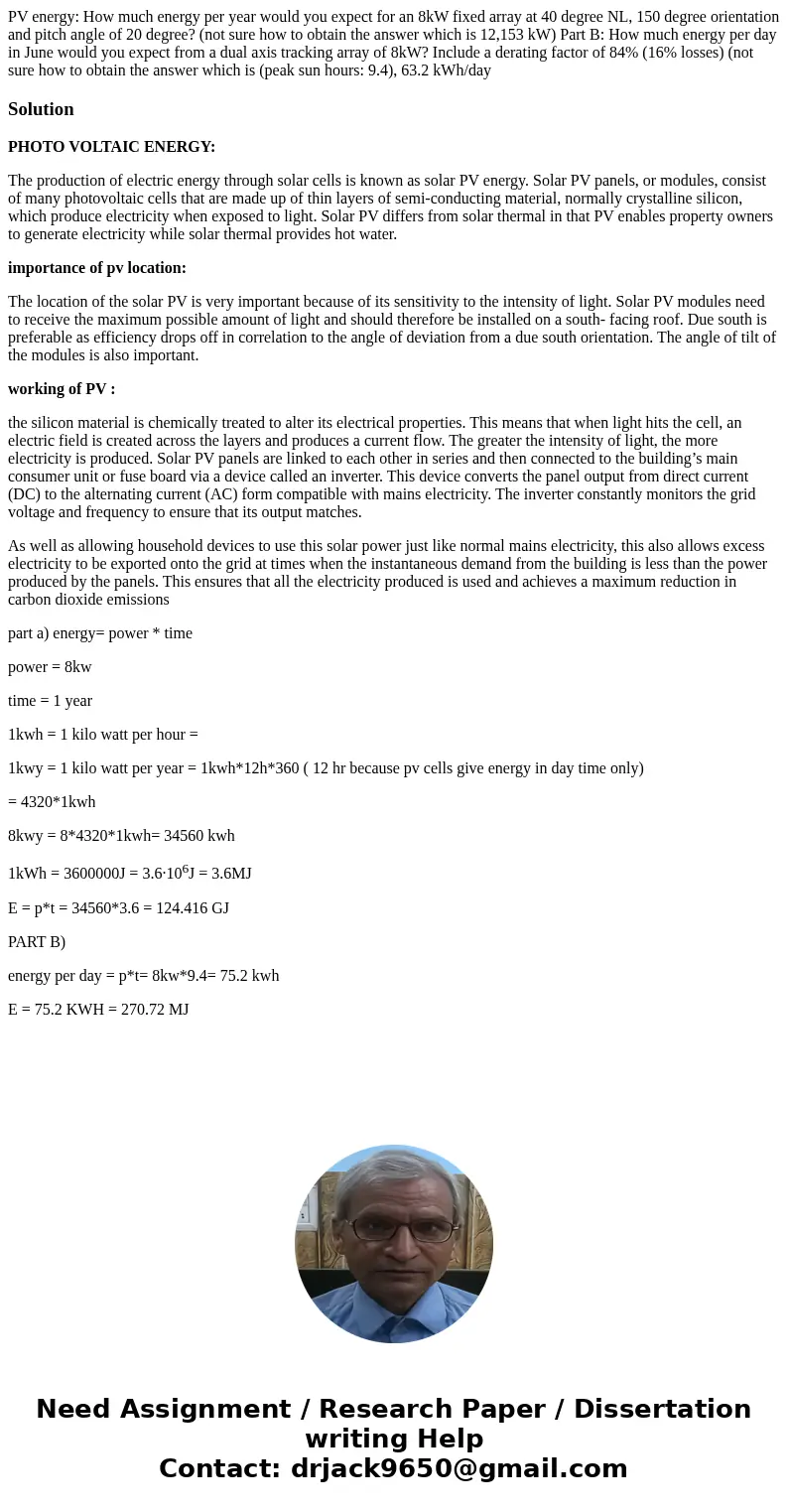PV energy How much energy per year would you expect for an 8
PV energy: How much energy per year would you expect for an 8kW fixed array at 40 degree NL, 150 degree orientation and pitch angle of 20 degree? (not sure how to obtain the answer which is 12,153 kW) Part B: How much energy per day in June would you expect from a dual axis tracking array of 8kW? Include a derating factor of 84% (16% losses) (not sure how to obtain the answer which is (peak sun hours: 9.4), 63.2 kWh/day
Solution
PHOTO VOLTAIC ENERGY:
The production of electric energy through solar cells is known as solar PV energy. Solar PV panels, or modules, consist of many photovoltaic cells that are made up of thin layers of semi-conducting material, normally crystalline silicon, which produce electricity when exposed to light. Solar PV differs from solar thermal in that PV enables property owners to generate electricity while solar thermal provides hot water.
importance of pv location:
The location of the solar PV is very important because of its sensitivity to the intensity of light. Solar PV modules need to receive the maximum possible amount of light and should therefore be installed on a south- facing roof. Due south is preferable as efficiency drops off in correlation to the angle of deviation from a due south orientation. The angle of tilt of the modules is also important.
working of PV :
the silicon material is chemically treated to alter its electrical properties. This means that when light hits the cell, an electric field is created across the layers and produces a current flow. The greater the intensity of light, the more electricity is produced. Solar PV panels are linked to each other in series and then connected to the building’s main consumer unit or fuse board via a device called an inverter. This device converts the panel output from direct current (DC) to the alternating current (AC) form compatible with mains electricity. The inverter constantly monitors the grid voltage and frequency to ensure that its output matches.
As well as allowing household devices to use this solar power just like normal mains electricity, this also allows excess electricity to be exported onto the grid at times when the instantaneous demand from the building is less than the power produced by the panels. This ensures that all the electricity produced is used and achieves a maximum reduction in carbon dioxide emissions
part a) energy= power * time
power = 8kw
time = 1 year
1kwh = 1 kilo watt per hour =
1kwy = 1 kilo watt per year = 1kwh*12h*360 ( 12 hr because pv cells give energy in day time only)
= 4320*1kwh
8kwy = 8*4320*1kwh= 34560 kwh
1kWh = 3600000J = 3.6·106J = 3.6MJ
E = p*t = 34560*3.6 = 124.416 GJ
PART B)
energy per day = p*t= 8kw*9.4= 75.2 kwh
E = 75.2 KWH = 270.72 MJ

 Homework Sourse
Homework Sourse